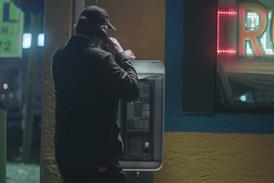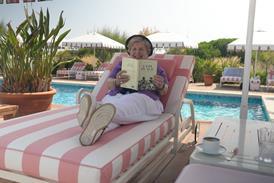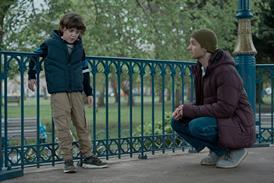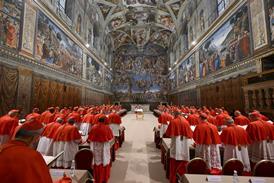If even-numbered years are always lucrative for the outside broadcast industry then 2008 will probably go down as one of the most profitable of the lot - despite the economic downturn.
The global nature of the Beijing Olympics meant that there were around 60 foreign OB trucks out in China, with the UK supplying a significant amount of equipment to the games in the form of trucks, flyaways and hire kit. Add the European Championships in June and you have all the ingredients for what Arena managing director Richard Yeowart calls “a cracking year”.
Yeowart says turnover at Arena is up 40% this year and, while others are more coy about their figures, it seems to have been a very good year across the board. This seems to apply whether companies got involved with the Olympics or not, with those that did not bid for -Olympic work benefiting from rival trucks' nigh-on three-month -absence from the UK as they travelled on their slow boat to China.
Rendering useless
At the Beijing Olympics, flypacks were a popular way around the logistical problem of transporting OB equipment long distances. They are attracting increasing investment with half an eye on the 2010 World Cup in South Africa. NEP Visions, for instance, had two flypacks out in China - one purpose-built and one created ad hoc by stripping the kit from an HD truck. “Flying the kit is certainly quicker but the bottom line is that you emasculate a truck and make it useless for that length of time,” says NEP Visions managing -director Martin Anderson.
Mike Ransome, chief executive of Presteigne Charter - which had 200 tonnes of kit and 45 engineers in Beijing - adds that flypacks are important for competing in the Middle East and Africa, where there simply aren't that many trucks. They are also very useful for getting into inaccessible locations, he adds, including venues such as the Royal Albert Hall.
Accessibility is one area driving OB investment, as the super-double and triple-expanding HD behemoths are complemented by vehicles aimed at other niches. Take Arena's new OB12, for example. One of three vehicles the company launched this year, it's a rigid-bodied truck that can work with its sides either expanded or retracted. “Its small footprint makes it perfect for London jobs and it's -picking up work that was not possible for an HD truck before,” says Yeowart.
A switch to LCD monitors, using fibre instead of cable, and innovations such as the back-to-back racks in Telegenic's recent trucks all mean that the Tardis-like mission to get more people and kit into a finite space continues. SIS Live, meanwhile, employed a yacht designer to maximise the space in its latest OB3 and to ensure the director has complete line of sight to all important areas.
Like all new trucks, it is HD and 5.1 capable, as the majority of the main players' key vehicles now are - even though industry estimates of the amount of HD work being carried out are quite low, ranging from 20% to 50%, depending on who you speak to.
Quirk of fate
Another trend is that EVS disc recorders are now de rigueur, especially for sport work - Telegenic's new T16 has 18 VT/disc positions - although VTR players are still in use and will be for some time in a mixed tapeless/tape environment. The next milestone is 3Gbps glue and routing with an eye on high-quality 1080 50p HD production in the future. “We have it on our new vehicle but that's a quirk of fate and time,” says Tony Cahalane, head of Barcud Derwen's Omni OB division. “I'm not sure anyone will have the budget to upgrade anything else after upgrading to HD so recently.”
And there's no doubt trucks cost money. You'll spend roughly£2m on the truck alone before a single camera channel (£100,000 each) or EVS (£120,000 each) is installed, meaning a fully populated HD 5.1 OB truck can cost up to£6m. This is triple the amount companies were spending on the top-range SD trucks, at least doubling the write-off period in the process.
And while the increasing trend towards multi-year sport contracts means that OB firms are better able to structure investment - Arena's football contract with Setanta is a four-year deal, for instance - few companies have grand plans for 2009.
“The launch of new HD trucks is declining, and the rash of building double and triple-expanding trucks is nearly over,” says Mick Bass, the managing director of outside broadcasts at Arqiva Satellite Media Solutions. “Old SD trucks that fall apart won't be replaced either. Everyone who had money has spent it.”
021 business development director Andrew Jones concurs with this, arguing that, following the upgrades of 2008, 2009 will see all involved “tightening their belts”. He adds: “I suspect less spot [one-off events] work will be commissioned as this is relatively expensive to produce.”
Elsewhere, companies such as Ionoco are aiming for a slice of the action with IP-based systems such as its 4RU Web2TV system. “Digital channels can offer OB coverage of niche events - dramas, arts, even paintballing - which can now be broadcast live or captured at a 10th of the cost of using an OB truck,” says chief executive Simon Ingram.
IP streaming
It's a trend that SIS Live is capitalising on by launching a new division aimed at IP streaming. “It's part of our build-up to 2012,” says Phil Aspden, SIS Live's head of commercial. “There is increasing demand for low-cost solutions to cover the entire gamut of sport.”
Of course, 2012 and the Olympics are a long way ahead, and OB has to navigate the choppy waters of 2009 first. “Will there be as many OBs next year?” asks Anderson. “I'd be surprised if there were fewer, although broadcasters might cut back on the number of cameras and EVS they deploy.”
And whether everyone makes it through next year - and on to the following even year and the promise of a home Olympics beyond - is frankly open to question. “There are too many companies competing and some rationalisation of the market is probably called for,” says Cahalane starkly.


























No comments yet